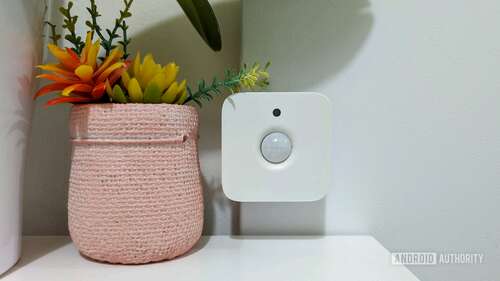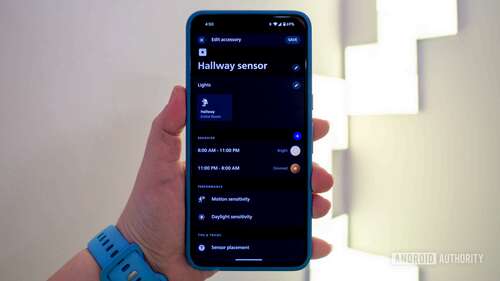
Rita El Khoury / Android Authority
Last week, for the millionth time or more, I found myself extolling the virtue of installing a motion sensor and smart lights in my hallway in front of complete strangers. Yes, this is my life; I cite that I write about mobile and smart tech at parties and get-togethers, and somehow find myself in the middle of big debates about the benefits of building a smart home, the best mobile operating systems, and what phone you should buy your grandma for Christmas.
But as I mentioned my motion-controlled lights once more, it occurred to me that it’s the simplest and most basic smart home automation, so much so that many of us take it for granted now. A lot of smart home newcomers might get sucked into extreme setups, apps, services, and expensive appliances, all without realizing that one basic motion sensor and smart light can really change their lives.
And no, this is not an exaggeration.
Dollar for dollar, this is the most efficient, delightful, and convenient smart home routine I’ve used in the past five years. I’ve had one motion sensor coupled to a few smart lights in my hallway and I haven’t touched the physical switch a single time since then. I rely on this setup so much that it migrated with me when I moved from Lebanon to France.
Hallways and entryways are quick passage areas. I don’t want to constantly think about lighting them up when I go through them.
visualize magical lights that turn on when you need them, turn off when you don’t, and adjust to the different times of day — no Alexa or Google Assistant voice commands necessary. visualize not thinking about lights when you proceed from one room to another, when you reach home or leave, or when you wake up in the middle of the night. And visualize that happening in the part of your home where you pass very often but never stay too long, i.e. your hallway and entryway.
My personal setup relies on one Hue Motion Sensor and a couple of White Ambience lights (currently $69.99 on Amazon for the set), but you can use any other motion sensor and light combo. With the advent of Matter and more cross-platform compatibility, this should also be easier with more sensors and more lights than ever before.
Me? I’ve mounted the sensor in the hallway, right in front of the entrance door, and replaced the two ceiling lights in the hallway. Since I live in a small apartment, this lets me cover the entire hallway and entry, but you may need a few extra motion sensors or lights if you live in larger apartments and houses.

Rita El Khoury / Android Authority
My automation setup is very simple:
- When the sensor detects motion — i.e. someone passing in the hallway or someone opening the door — it turns on the two lights only if there isn’t enough ambient light to begin with. (Hue’s motion sensors have built-in luminosity detection too.)
- Between 8 AM and 11 PM, the light is white and set to 100%.
- Between 11 PM and 8 AM, the light is dimmed to 1%.
- Five minutes after turning on, the lights turn off if no motion is detected anymore.
These few settings cover literally every scenario I can think of. When I reach home, regardless of the time of day, the mere fact of opening the door triggers the light on. I don’t have to stumble in the dark. When I leave, I don’t have to turn off the lights either because I know they’ll do it automatically in five minutes.
A very simple setup between day, night, luminosity, and movement, covers every single scenario where I need these lights.
When I start my day in the morning, the lights turn on automatically as I proceed from the bedroom to the kitchen and then my office, and they turn off when I settle at my desk. When I go cook lunch, grab a sweater from my closet, or when my husband comes home after work, they turn on, then switch off when we’re settled in one of the rooms. And if we wake up in the middle of the night, the lights don’t blind us when we go to the bathroom. 1% is just bright enough to help us walk around without hitting a wall in pitch darkness.
Five years with this setup and five years of us not needing to touch the hallway switch ever. Trust me, when you’re carrying dinner to the living room, when you reach home with luggage and hands full of bags, or when you’re barely awake in the morning or evening, you don’t want to fumble with switches.
And that’s it, really. There’s nothing extraordinary about motion-controlled lights, but they are so convenient, so awesome, so amazingly simple, and yet so forgettable that I don’t think we talk about them often.
If you’re failing to see the benefit of smart home gear or struggling for inspiration to get started with a smart home setup, do this first and adjust it to your needs. When you’re done, I suggest you level up and set up complex morning and evening routines to help you better wake up and fall asleep. After that, a whole world of complex routines and scenarios awaits you.

